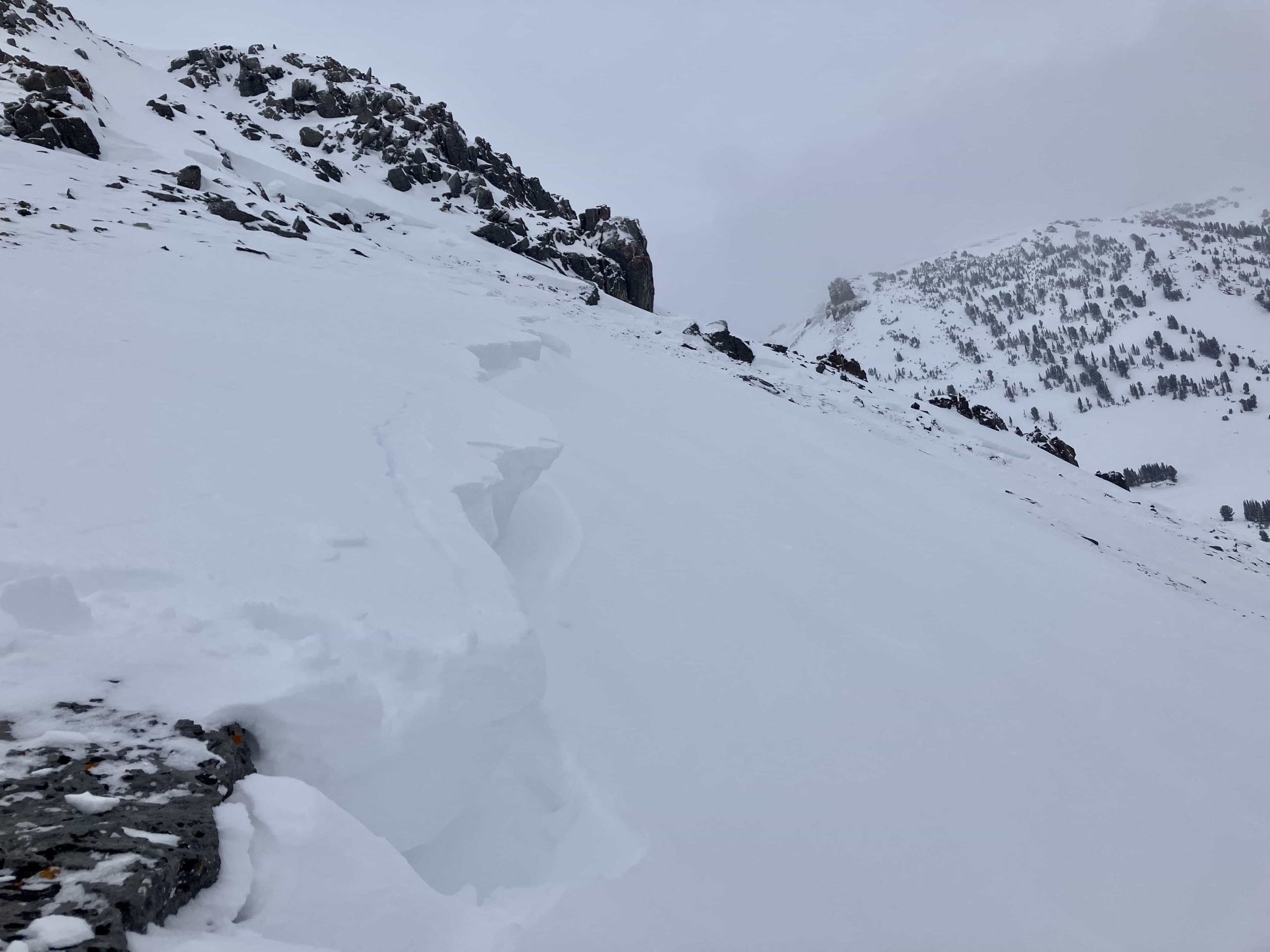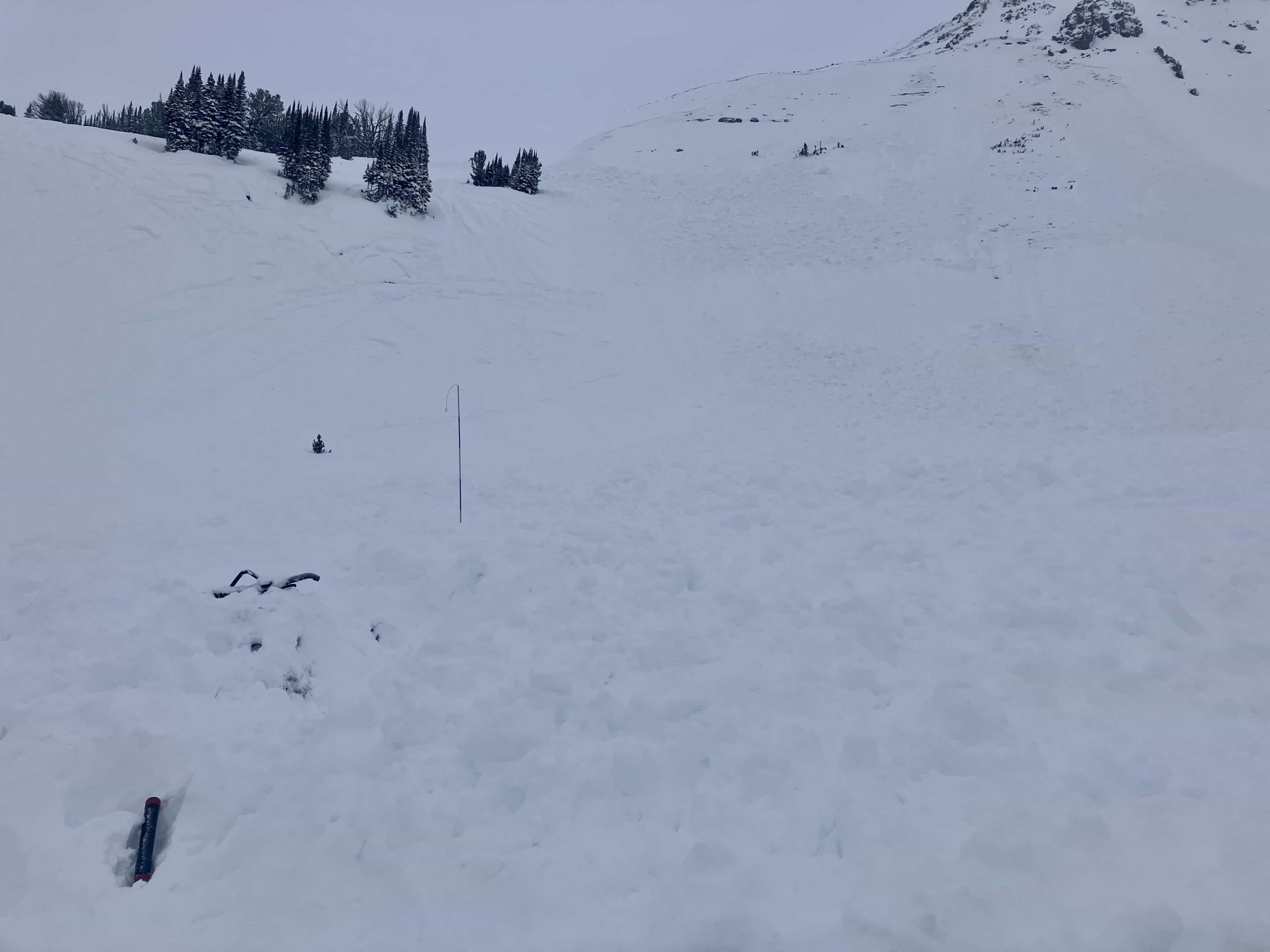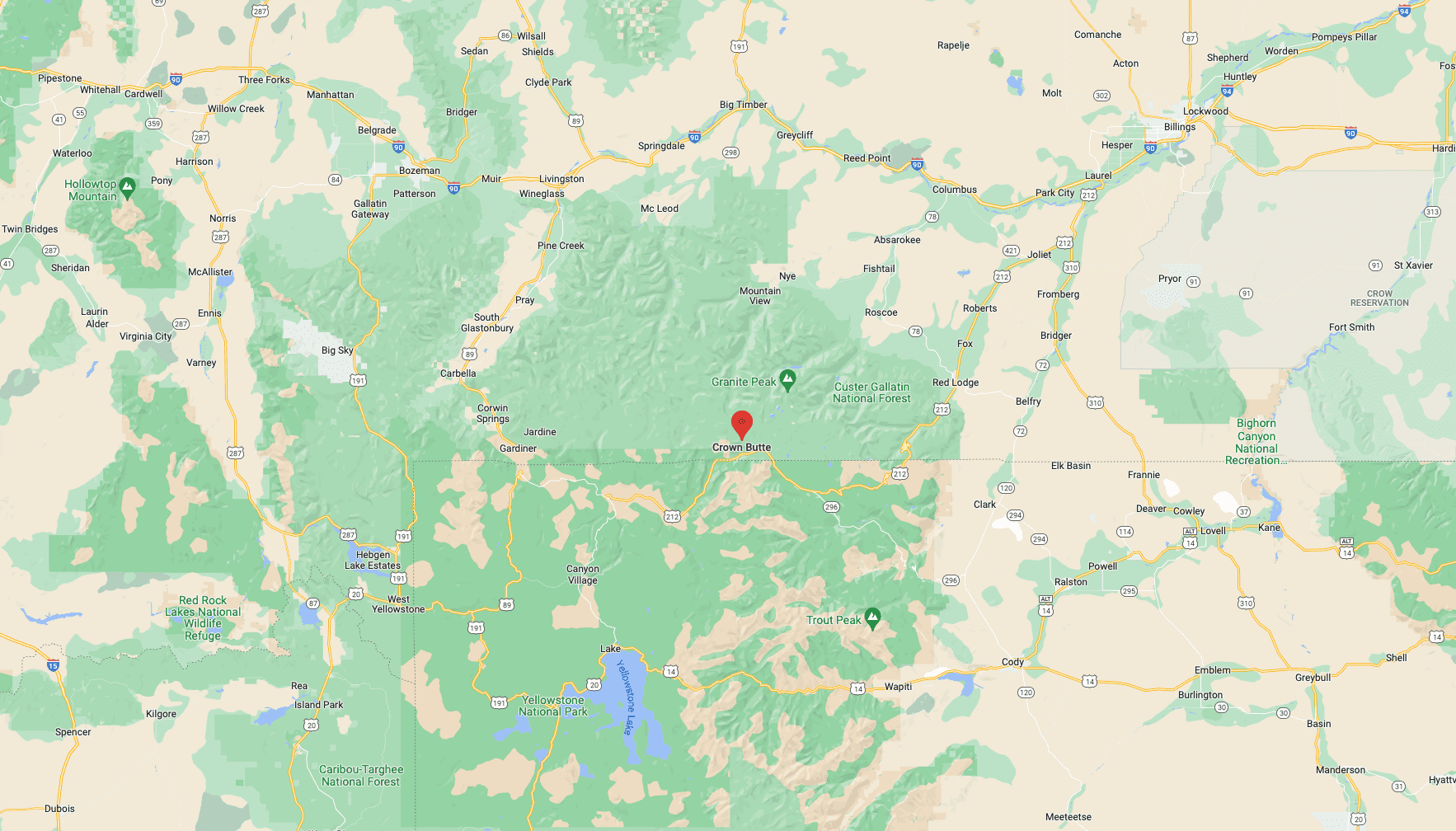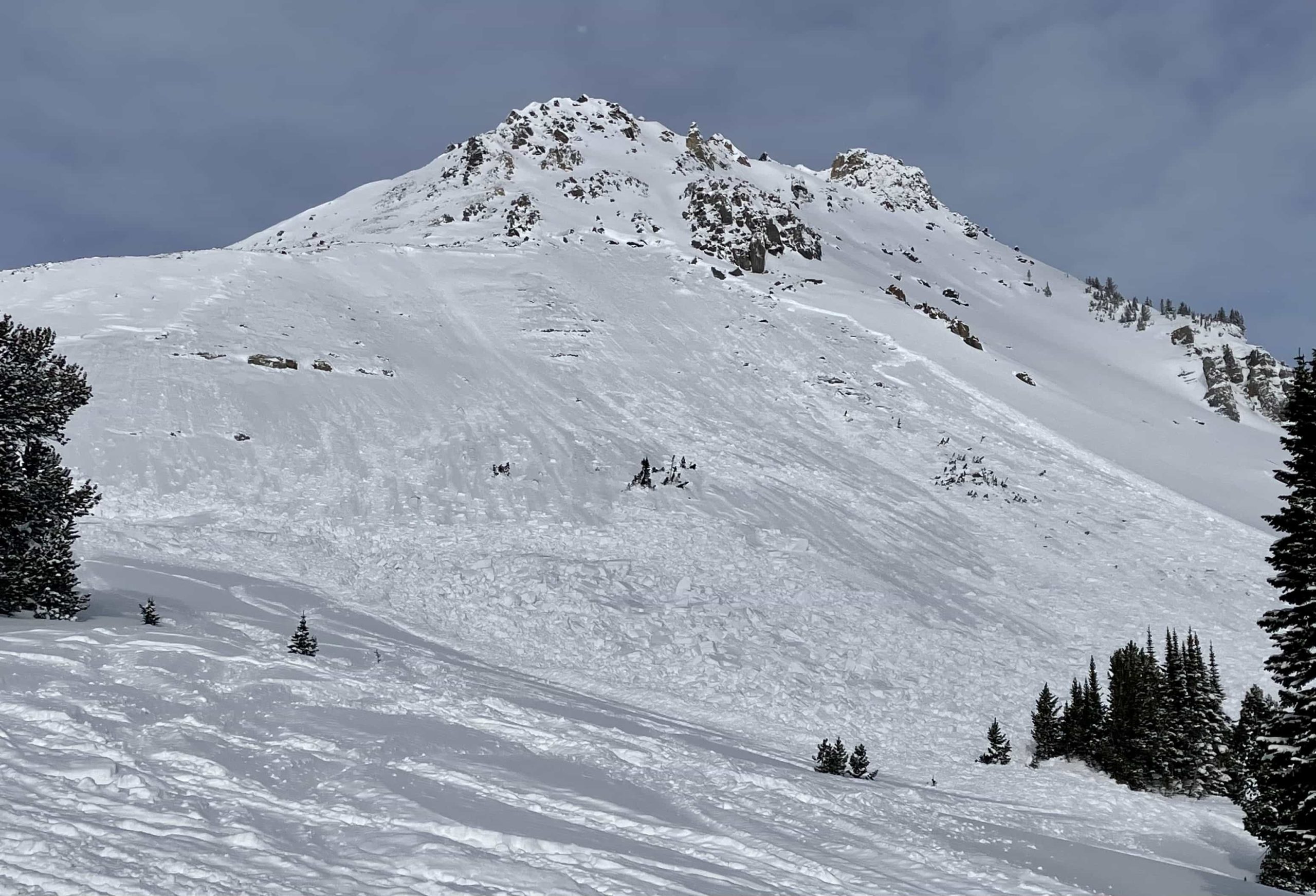
A snowmobiler was killed in a large avalanche near Daisy Pass north of Cooke City, MT, on Saturday. Two snowmobilers from Washington were riding uphill when one of them triggered the slide and was swept about 600 vertical feet.
The buried rider was covered in five feet of snow. He was wearing an avalanche airbag backpack that wasn’t deployed. Both riders had shovels and probes, but neither wore an avalanche beacon.
The avalanche occurred near Daisy Pass on Crown Butte on a southeast facing slope at 9,800’. Two riders from Washington were snowmobiling uphill on adjacent slopes. One rider was climbing a steeper slope and triggered the avalanche 100-200’ below the top. He was carried 600 vertical feet and buried 5 feet deep. The buried rider was wearing an airbag pack that was not deployed. Both riders had shovels and probes. They were not wearing avalanche beacons. A nearby group of riders rode up to the slide within minutes after it happened, saw a buried snowmobile and began to search for the rider. One rider from that group went into Cooke City to alert Search and Rescue. The buried rider was located with a probe line an hour after the avalanche happened. He was unable to be revived with CPR and AED at the site. The avalanche appeared to be 2-4′ deep, 500′ wide, 600′ vertical, and broke on weak snow near the bottom of the snowpack. Our deepest condolences go out to the family, friends, and those involved.

The avalanche was about 2-4 feet deep, 500 feet wide, and 600 feet long.
The avalanche that killed a snowmobiler on Saturday near Cooke City broke 1.5-4 feet deep on a layer of sugary, faceted snow below a very hard slab (video of site investigation). Snow from the past week was drifted onto the slope to further stress the weak layer towards breaking. Also, a snowmobiler triggered slide on Sheep Mountain near Cooke City broke 1-4 feet deep (video, details), and another on Lionhead ridge near West Yellowstone broke 2-4 feet deep (details). All these avalanches broke on buried persistent weak layers which means similar avalanches continue to be possible until the snowpack has an extended break from the stress of new and wind-drifted snow.
Avalanches of recently wind-drifted snow are also possible to trigger. These could be large enough to bury a person, and especially dangerous if they push you into hazards like trees, rocks, or over cliffs. On Sunday, skiers north of Bridger Bowl changed their plans after finding unstable snowpack test results below a slab of wind-drifted snow and there was a natural avalanche on Saddle Peak that involved recent wind-drifted snow.
The snowpack depth is shallower in northern areas than further south, but the list of avalanche concerns and travel advice is the same. Carefully assess the snowpack on each steep slope you plan to ride or cross. Watch for signs of unstable drifts such as cracking across the snow surface and avoid steep slopes where you suspect buried weak layers exist. Slopes with a relatively shallower snowpack or where the snow depth varies greatly across a slope are the most suspect and first to be avoided, but you should dig and probe to look for buried weak layers before riding or crossing any steep slope. Buried weak layers and recently drifted snow make human-triggered avalanches possible and the avalanche danger is MODERATE.
– Current forecast
The fatality was the third of the season in North America.

